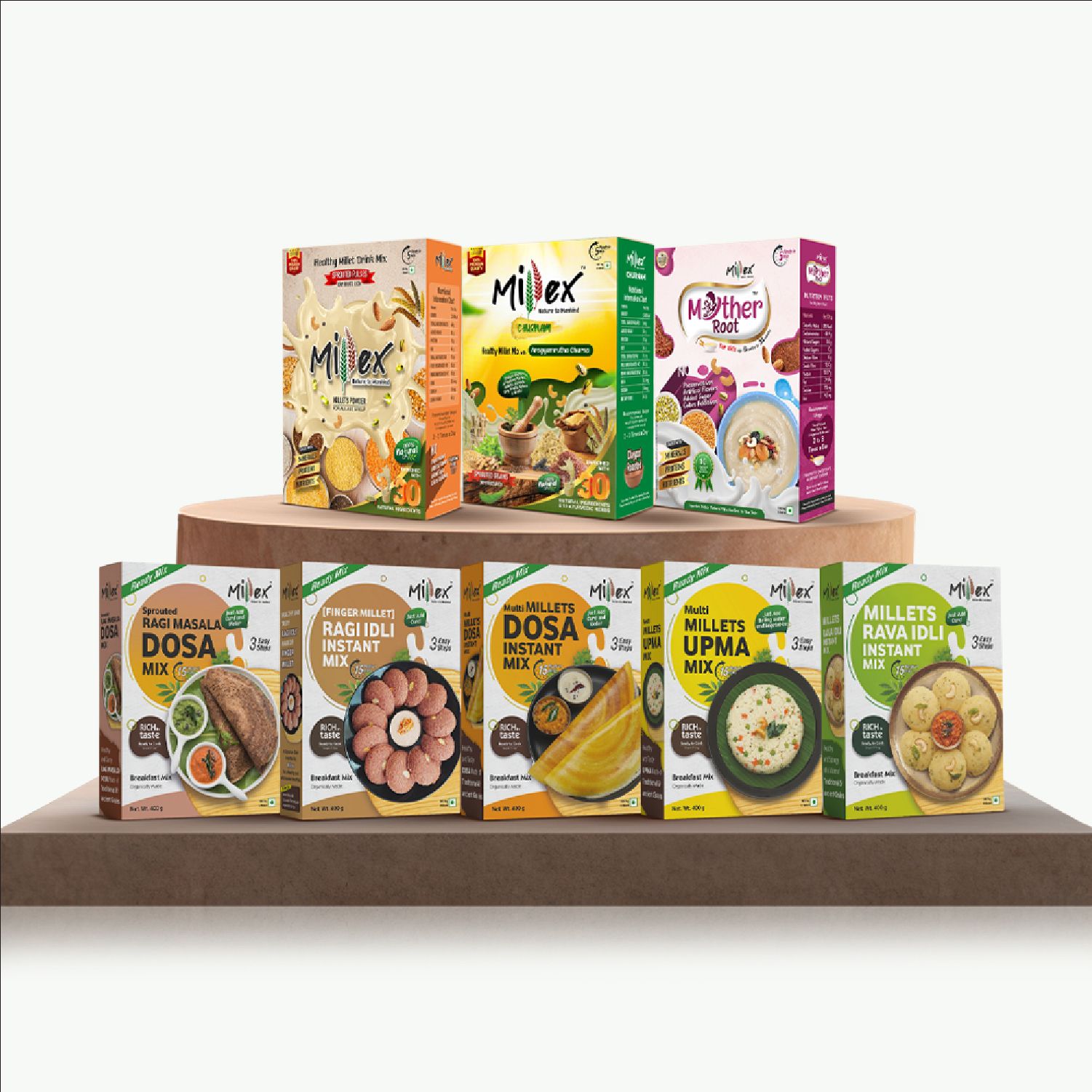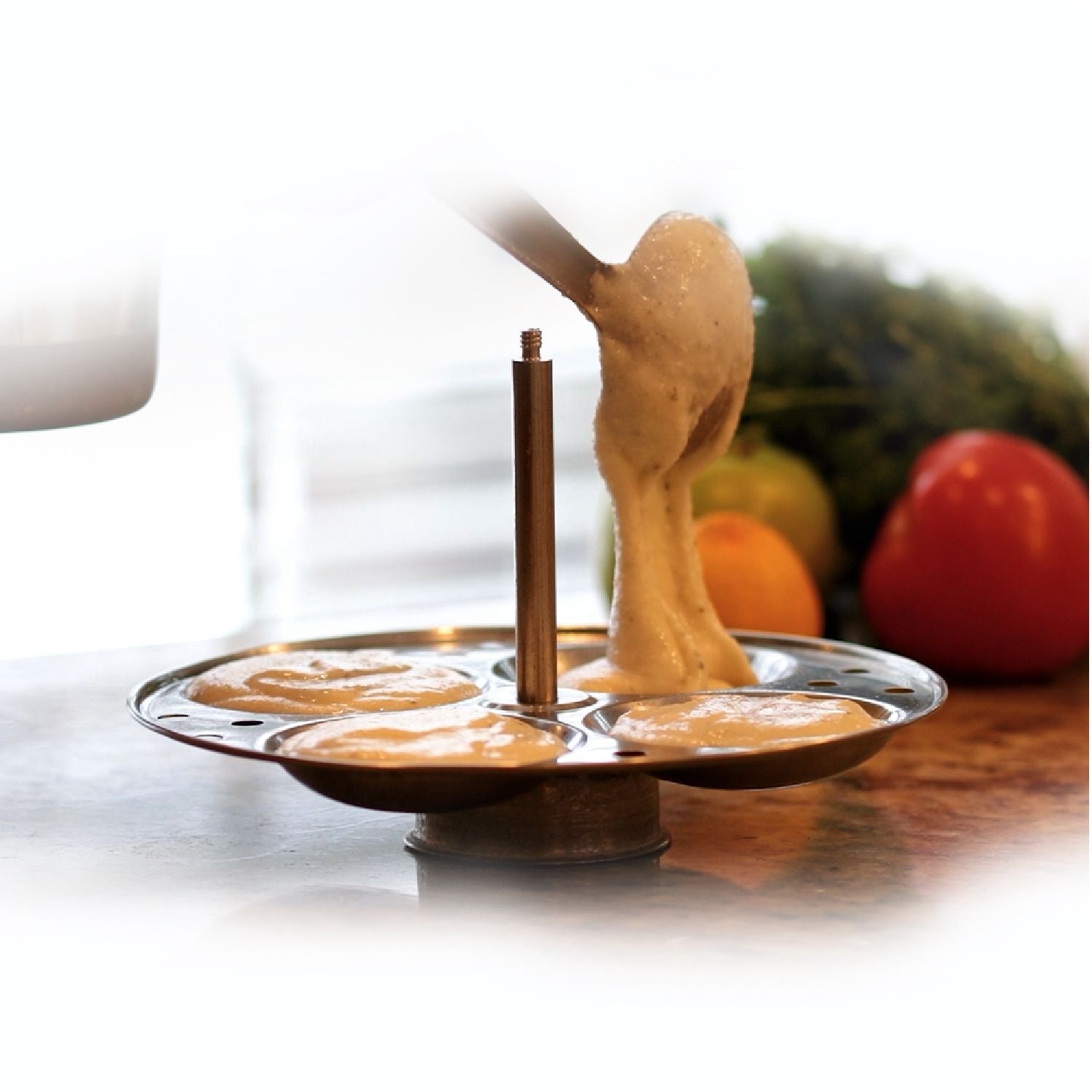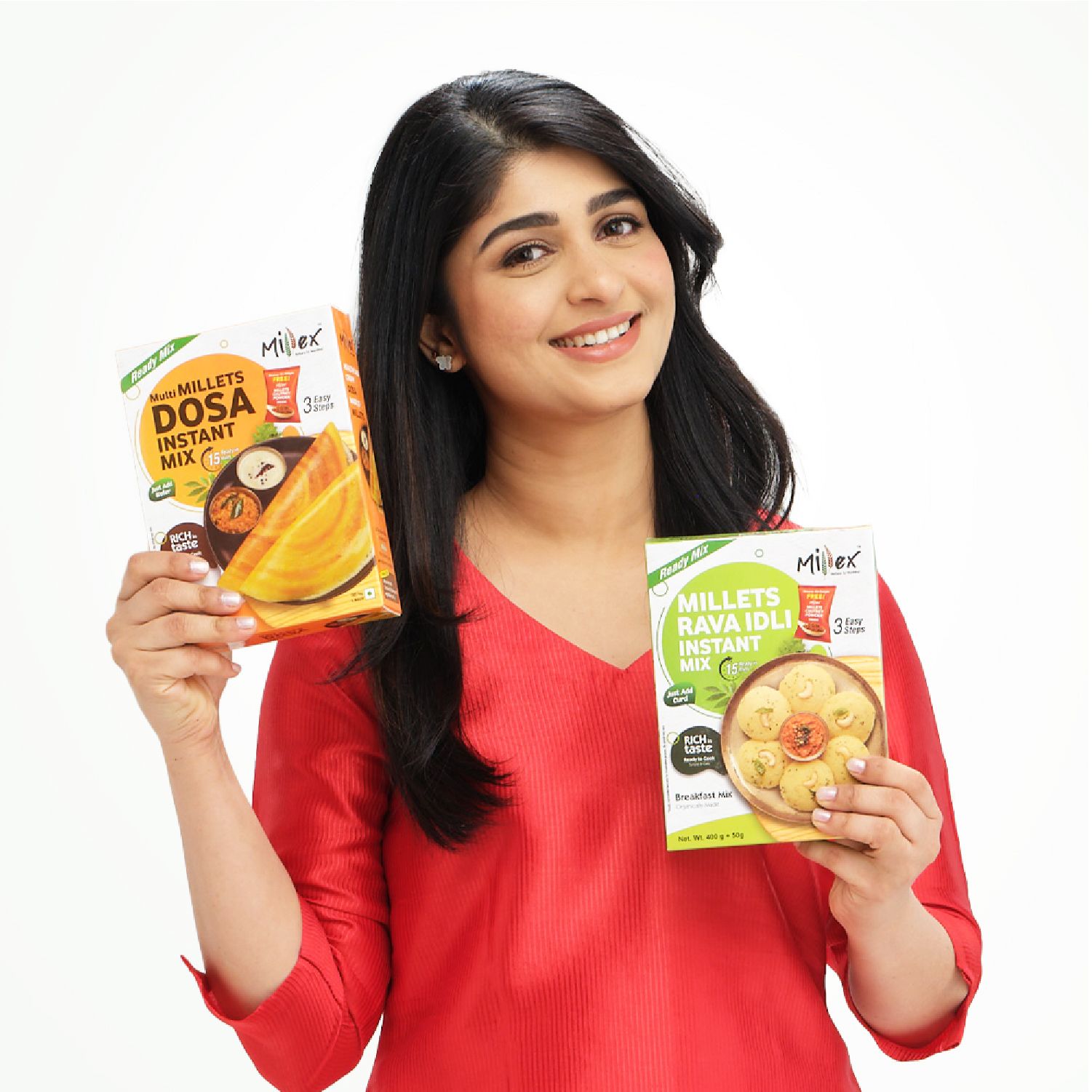Starting solids at the right time is essential for your baby’s growth, immunity, and brain development. Millex makes it easy with natural millet-based first foods like Mother Root. Nutritious, safe, and convenient – perfect for little ones and parents.
Long working hours and tight schedules tend to make it difficult to prepare healthy meals, but the necessity for balanced food never goes away. Ready-to-eat foods offer a convenient means of experiencing healthy nutrition without having to waste time in the kitchen. Parents and even families like ready meals that are safe, delicious, and quick to prepare, making sure health is never sacrificed, even during the busiest days.

Millet offers millet-based ready-to-eat blends that balance nourishment and convenience in each portion. We also offer special Millex Mother Root, the best first foods for babies starting solids, offering parents secure, natural, and reliable options for their child's first foods. Now, let us explore when and how to start solid foods for your baby.
Why Babies Need Solid Foods
Babies rely on breast milk or formula as their primary source of nutrition for the first six months of life, but their nutritional needs change as they grow. Stored nutrients such as iron start to decline at about six months of age, and their bodies need additional sources. Iron and zinc become particularly crucial at this time, and solid foods assist in meeting the deficiency.
Solids also aid growth beyond nutrition. The process of swallowing and chewing makes the mouth muscles stronger, which would later play a part in speech development. Introducing new tastes and textures familiarises the baby with eating diverse foods and prepares them to join the family dinner table.
Signs Your Baby is Ready for Solids
Parents usually ask themselves how they can identify if their child is ready to start this new phase. Most babies show clear signs by six months, but it may be a couple of days either way. Signs are food head and neck control, sitting with support, and wanting to eat.

Reaching for food on your plate or opening your mouth as a spoon reaches you are big hints. Another important indication is the weakening of the natural tongue reflex, which earlier pushed food away. These signs together indicate that a baby is ready to eat solids.
Why It's Best to Wait Until Six Months
Waiting too long to introduce solids can upset an infant's still-developing digestive system. Infants under four months have immature stomachs and intestines that are not ready to process complicated foods. Early exposure can also increase the possibility of allergies or feeding problems later.
Waiting until six months provides their body with sufficient time to gain enough strength for swallowing and digesting solids. Most babies double their birth weight by this age and have a genuine interest in what other people are eating. Waiting takes the time to do so that both nutrition and preparedness come together for a more effortless transition.
Best Time of the Day to Introduce Solids
Selecting when to start solid foods for baby is an important consideration in terms of how easily the experience proceeds. A happy and relaxed baby responds better to new experiences. Presenting solids immediately after a breastfeed or formal feeding is optimum because babies have room for minimal tastes but are not too hungry.
Trying solids during fussy or tired moments tends to result in failure. With time, parents become accustomed to reading cues about hunger and fullness. Enthusiasm upon the sight of food or leaning forward in response to the spoon are good indicators. Turning away, closing the mouth, or pushing the spoon away indicates the baby has eaten enough.
How Much to Feed Initially
Initiating solids is not a matter of substituting milk feeds immediately, but is a step toward introducing small tastes over time. During the initial stage, one or two teaspoons daily is enough. Most babies will only lick and taste and not swallow much at first, but that is okay.
When confidence has built up, parents and babies can increase the amount. Most babies are eating three small meals a day by the close of the first year in addition to breast milk or formula. Respecting appetite as a guide to portions is important, as hunger and food interest can fluctuate from day to day.
Initial Food Textures to Introduce
Smooth, soft textures facilitate the transition to solids more easily and safely. Pureed or very finely mashed foods are generally the starting solids for infants. Some parents blend these foods with breast milk or formula to establish a familiar flavour. Textures also thicken over time, progressing to minced or coarse mash food.
At 9 to 12 months, babies may be ready for finger foods like soft bits of fruit or soft-cooked vegetables. Introducing solid foods to baby with a variety of textures at an early age helps minimise fussy eating and promotes the development of chewing and swallowing. Soft food can be chewed efficiently even before babies' first teeth appear.
Types of Foods to Start With
Iron sources are where to begin. Some of the choices are iron-fortified baby cereal, minced meat, poultry, fish, tofu, cooked legumes, and mashed egg. In addition to these, incorporating a wide assortment of vegetables, fruits, grains, and milk products gives a balanced meal.
Steamed carrots, sweet potatoes, pumpkin, spinach, or broccoli are good options for vegetables. Banana, pear, melon, apple, and avocado are easy and pleasant fruits. Whole grains like oats, rice, roti, or pasta supply fibre and energy. Full-fat cheese or yoghurt can be given after solid foods are introduced. Diversity provides babies with a wide variety of nutrients.
Foods and Drinks to Avoid in the First Year
Certain foods can be problematic for infants aged below one year. Honey must be avoided because it leads to infant botulism. Cow's milk as a beverage should be delayed until after the first year, though cheese and yoghurt are okay.
Strongly salty or sweet foods, processed foods, and sugared beverages are inappropriate for infants. Juice is not necessary before the age of 12 months, as whole fruit already gives enough nourishment. Foods that could lead to choking, such as whole grapes, nuts, popcorn, raw vegetables, and meat in large pieces, should be avoided or sliced into very small, soft pieces.
Introducing Allergenic Foods Safely
Parents tend to fear allergies, but current advice suggests introducing allergenic foods early can actually decrease risks. Peanuts, eggs, wheat, dairy, soy, fish, and shellfish can be added after more basic foods are well tolerated.
These should be given at home in minimal quantities and not in restaurants. Observe for signs of reaction like rash, vomiting, or diarrhoea. If one has a history of allergies in the family, getting an opinion from a paediatrician prior to introduction would be useful. Gradual exposure with strict observation makes it safe while increasing the baby's diet.
Baby-Led Weaning as a Method
Some parents are more comfortable with allowing babies to feed themselves soft finger-sized amounts of food. This approach, Baby-led weaning age, promotes independence and discovery. Babies are able to take soft vegetables, tiny chunks of fruit, or cooked bits of pasta and learn to feed themselves.
It can be messy, but it assists in hand-eye coordination and skills in self-regulation. Parents must still watch closely and make sure all food is soft and easy to swallow. Intermixing baby feeding tips and baby-led techniques usually has a good outcome with flexibility, according to circumstances.
Homemade Baby Food
Some parents prepare baby food at home to have control over ingredients and expenses. Freshly cooked vegetables, fruits, and grains can easily be mashed or pureed. Yet, foods such as spinach, beets, carrots, and green beans must be excluded for four months because of natural nitrates.
Steaming greens, baking fruits, and blending beans are safe methods of preparing baby-safe meals. Homemade food must always be soft, without added sugar or salt, and kept safely. Leftovers must be refrigerated and served within two days. This helps parents offer fresh and natural food every day.
Assisting Babies to Learn During Meal Times
Mealtimes are learning times as well as meal times. Infants observe parents and older siblings as they eat, imitate actions, and increasingly follow routines. Allowing a baby to hold a spoon during feeding allows them to rehearse motor skills. Sipping water from a cup is possible for many babies at 9 months of age, setting them up for weaning from bottles in the future.
Allowing them to touch and play with food promotes curiosity, despite the mess. Speaking and smiling during feeding creates positive connections. The act of discovery with food by the baby weaning guide is just as vital as the nutrition, determining lifelong attitudes about eating.
Millex- Healthy Baby Foods and Ready-to-Eat Meals for a Good Start Every Day
Providing your baby with a good start of wholesome and safe food is one of the most rewarding steps of parenthood. A considerate solid food introduction sets the stage for a lifetime of healthy eating.

Millex makes it convenient by providing the best first foods for babies, such as Millex Mother Root, a variety of millet-based products, health mixes, and more. All the products are designed to deliver both taste and nutrition right to your door. Visit the Millex online store now and pick convenience with nutrition for your family's everyday needs. Shop now to live better.
1. When can I start giving Millex products like Mother Root to my baby?
From 6 months, once your baby begins solids.
2. Are Millex products safe for infants?
Yes, they’re 100% natural, free from preservatives, and baby-safe.
3. What makes Millex Mother Root special?
It’s a blend of sprouted ragi, pulses, red rice & dry fruits – rich in protein, iron, calcium & vitamins.
4. How do I prepare Millex Mother Root?
Mix with water or milk, cook for a few minutes, and serve warm as porridge or dosa.
5. Can older kids also consume Millex millet mixes?
Yes, children above 6 months up to school age can enjoy it for nutrition and energy.






